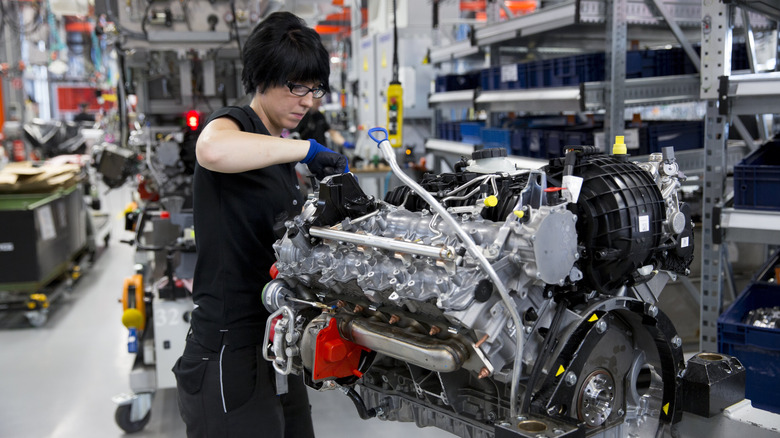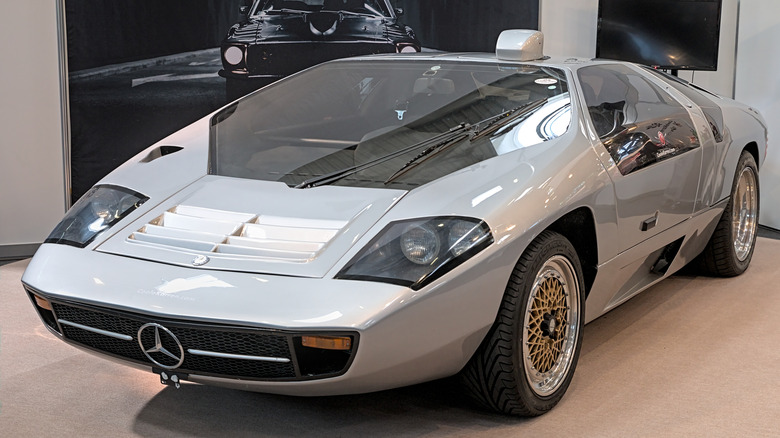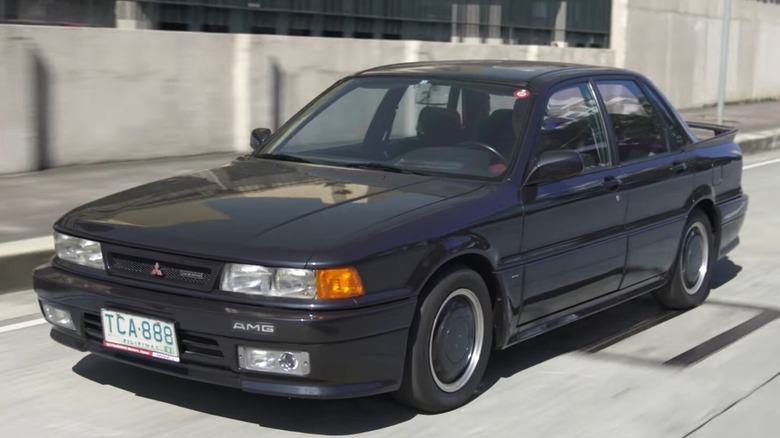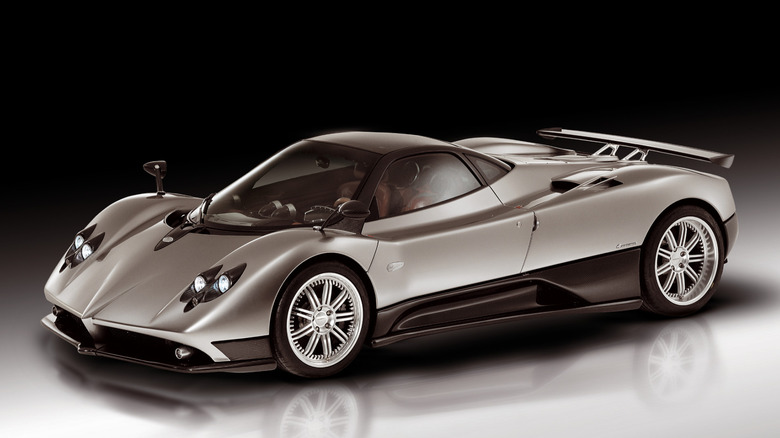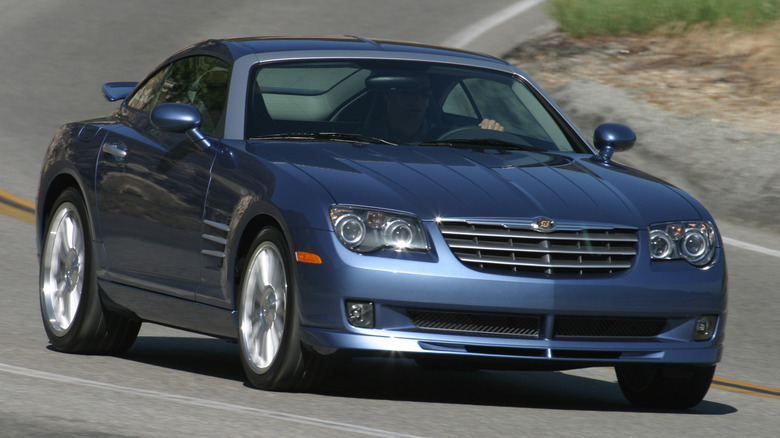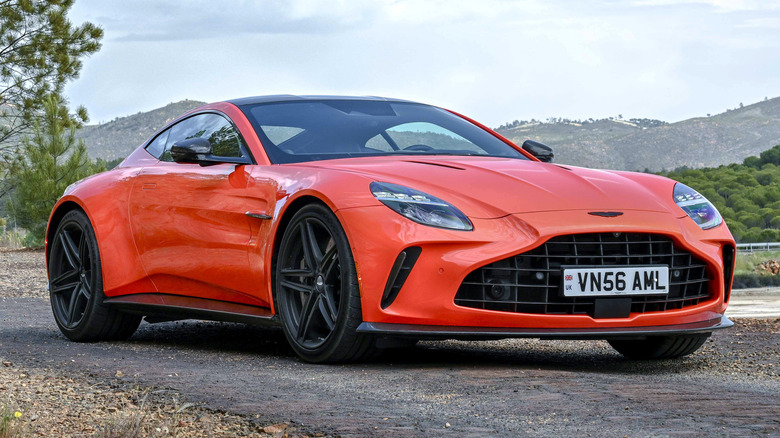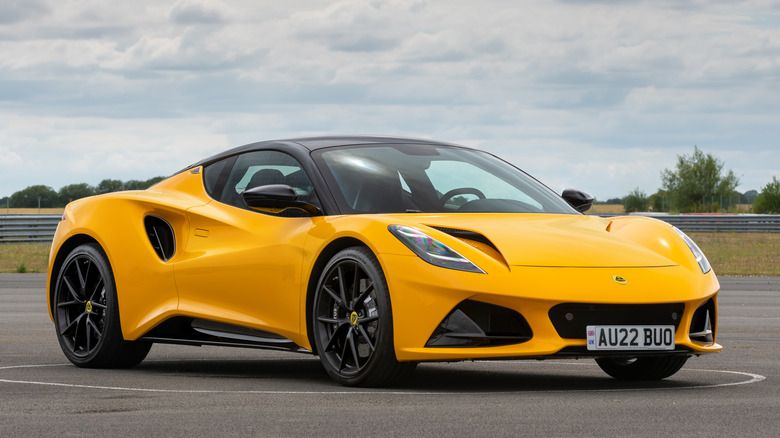6 Non-Mercedes Cars That Use Mercedes-AMG Engines
AMG was founded in 1967 and worked alongside Mercedes-Benz for years developing racing engines and other performance upgrades. The company signed an agreement to develop vehicles for Mercedes-Benz in the early '90s. In 1999, Mercedes-Benz took a controlling interest in AMG, becoming its sole owner in 2005. Today, AMG acts as M-B's in-house tuner, providing a full line of high-performance AMG and AMG-lite vehicles that are covered by the Mercedes-Benz new-car warranty. The brand is also known for its traditional "one man (or woman), one engine" mantra, with each of the most powerful high-performance engines being constructed by a single craftsman.
But Mercedes-Benz-AMG's role has not been limited to simply hot-rodding in-house vehicles of all types with the greatest Mercedes-AMG engines ever made. In addition to that corner of the business, AMG has long been an engine supplier to carmakers in many different locations, from Japan and Italy to the U.K., Germany, and the U.S. Here are six non-Mercedes cars that use Mercedes-AMG engines, in chronological order of their production.
The Isdera Imperator is an extremely rare AMG supercar
The Isdera Imperator was a passion project designed and created by Eberhard Schulz, who got a job at Porsche's styling and concept department by driving up in his own custom exotic car in 1970. After a stint at Porsche, Schulz later allied himself with noted tuner Rainer Buchmann, forming the firm of B&B GmbH & Co Auto KG. Together they created the gullwing-doored CW 311 concept car. The car was presented to Mercedes, which decided against volume production but was willing to supply engines and other parts to facilitate further development.
Eberhard left B&B in 1982 and created Isdera, with the intention of putting the CW 311 into limited production as the Isdera Imperator 108i. Two years later, the Imperator was introduced. A total of just 30 units were produced from 1984 through 1993.
The engines used in the Imperator 108i included AMG-modified Mercedes-Benz V8s, progressing from a 5.6-Liter version with 390 horsepower to a 6.0-Liter version with 420 horsepower (more powerful than the rare AMG Hammer). These engines drove the Imperator's rear wheels through a five-speed ZF gearbox. The manufacturer estimated its performance at zero-to-60 mph in 5.1 seconds, with a 175 mph top speed.
[Featured image by Alexander Migl via Wikimedia Commons | Cropped and scaled | CC BY-SA 4.0]
The Mitsubishi Galant AMG blended JDM and European ideas
The 1989-91 Mitsubishi Galant AMG was a collaboration between Mitsubishi Motor Corporation and AMG, taking place shortly before Mercedes-Benz and AMG sealed their vehicle-development deal. This car was actually the second collaboration between these companies, with AMG having previously made an appearance package (with no performance upgrades) for Mitsubishi's Debonair sedan. The Galant AMG brought a higher level of performance combined with some upscale interior and exterior touches.
AMG modified the Galant's 2.0-Liter naturally aspirated engine. The result was a horsepower boost from a stock 144 to 170, with a redline of 8,000 rpm. The exterior was treated to an AMG body kit that featured sill extensions, more aggressive bumpers front and rear, along with a spoiler on the trunk lid and AMG badging all around. Inside, leather seats plus a wood shift knob and door trim provided some European-style ambience.
While the Mitsubishi Galant AMG numbered only 500 units over three years of production and was a JDM-only model, a few are alleged to have reached Germany.
The Pagani Zonda used several AMG engines
The Pagani Zonda was Pagani's first production vehicle. Introduced in 1999, it technically hasn't been in production or years, with the final road-going example (Chassis #140, the "Arrivederci") delivered in 2019. The car's run included both street-legal versions and Zonda R models designed for the track. The Pagani Zonda HP Barchetta, one of the highest-trim variants, is on record as one of the most expensive hypercars ever made.
Horatio Pagani worked with Mercedes-Benz-AMG from the beginning to supply the engines powering his vehicles. The Zonda featured a variety of AMG-tuned V12 engines throughout the years, starting with a 6.0-Liter version putting out 389 bhp in the early Zonda C12 models. Chassis #140, the Zonda Arrivederci, packs a 7.3-Liter Mercedes-AMG V12 with 789 horsepower and 811 lb-ft of torque.
In addition to the Zonda, Pagani also produces the Huayra (since 2012) and the Utopia (unveiled in 2023), both motivated by powerful Mercedes-AMG V12 engines. Pagani currently makes just 50 cars per year, each one hand-built to its owner's specifications, at a cost of several million dollars each.
The Chrysler Crossfire SRT-6 struggled to find fans
The 2005-08 Chrysler Crossfire SRT-6 is one of the strangest cars ever built by Chrysler – a lovechild of the DaimlerChrysler "merger of equals" that turned out to be anything but. The SRT-6 model of the Crossfire was the high-performance version, built on the R170 platform of the previous-generation Mercedes-Benz SLK. Built in Germany by Karmann, the top-of-the-line Crossfire SRT-6 was mechanically similar to the Mercedes-Benz SLK32 AMG. Crossfires were available as both coupes and convertibles.
The handcrafted AMG engine in the Crossfire SRT-6 was a 3.2-Liter, supercharged, intercooled V6 with an output of 330 horsepower. The only transmission was a five-speed automatic. Zero to 60 mph happened in 5.1 seconds, with a quarter-mile time of 13.5 seconds at 107 mph, according to Car and Driver testing.
The Crossfire SRT-6 had a performance-tuned exhaust, stiffer suspension, upgraded dampers, Michelin Pilot Sport tires on 15-spoke, 18-inch front and 19-inch rear wheels, and four-wheel ventilated discs. Exterior touches included a chin spoiler and large fixed rear spoiler. Inside, the SRT-6 received Nappa leather/Alcantara seats and a 200 mph speedometer (max speed was limited to 158).
It was the first Chrysler to have the SRT badge (it had only been seen on Dodges to that point), and its reception was rather cool. The lack of a manual transmission likely hurt its street cred.
The Aston Martin Vantage is an AMG-powered beast
The Aston Martin Vantage is one of the more recent vehicles to have a Mercedes-AMG engine under the hood. The AMG V8 was also introduced around the same time as an alternative to Aston's V12 in the DB11, and it's been the primary engine offered in the redesigned Vantage, with a few limited V12 exceptions.
Even though Aston Martin has designed its own V8 engines in the past, the realities of their low volume (just 6,620 cars sold in FY 2023), increasingly difficult emissions standards, and Aston's current financial issues made Aston Martin's switch to Mercedes-AMG engines a no-brainer. Mercedes is also a partial owner in the company.
The latest Vantage V8 has a 4.0-Liter, twin-turbocharged AMG-tuned engine that's even more powerful than the original version that debuted in 2019. Starting with 503 horsepower through 2024, the latest 2025 Vantage has an output of 656 horsepower – the result of revised camshafts, new turbochargers, and an upgraded cooling system. Aston has estimated a zero-to-60 time of 3.4 seconds for its new V8 Vantage, with a top speed of 202 mph.
Another current Aston Martin model that comes with a Mercedes-AMG engine is the DBX 707 SUV, which for 2025 has a 697-horsepower Mercedes-AMG V8.
The Lotus Emira uses a 4-cylinder AMG engine
The 2022-24 Lotus Emira is Lotus' last ICE vehicle. Following up models like the Elise, Exige and Evora, the mid-engine Emira takes styling cues from its EV supercar sibling, the Evija. Still built at the original Lotus factory in Hethel, England (EVs are built in China by Lotus' most recent owner, Geely), the Emira shows what can be accomplished on an adequate development budget.
While the Emira started out with a supercharged, 400-horsepower Toyota-based V6 as its standard engine, it later incorporated a Mercedes-AMG turbocharged 2.0-Liter inline four-cylinder engine. But as the smaller-displacement, tax-efficient engine option, the AMG mill has been detuned to 360 horsepower from the 416 as used in the CLA AMG, so it won't upstage the Emira's V6. An increase to 400 horsepower has been introduced for 2025 in certain markets.
There is no manual option with the Mercedes-AMG, only an AMG eight-speed dual-clutch automatic gearbox. While the engine and gearbox come sealed from the factory, Lotus adds its own exhaust system. With the AMG four, the Emira does zero-to-60 in 4.2 seconds, with a top speed of 171 mph.
